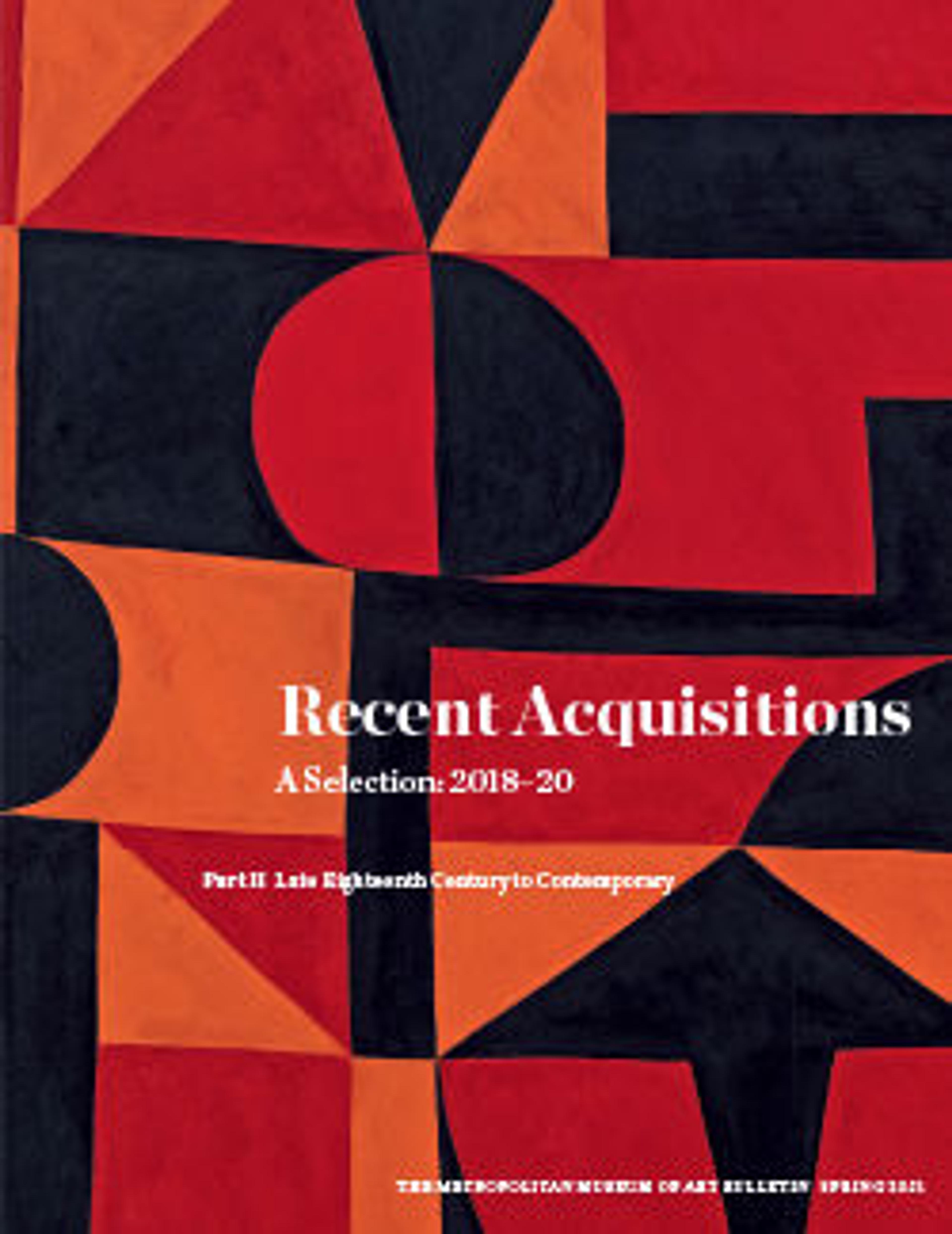Little Denise (Denise Maréchal, later Madame Georges Béart, 1883–1956)
Van Rysselberghe’s six-year-old niece, Denise Maréchal, poses next to a marble mantelpiece and underneath a fashionable Japanese hanging scroll. At once innocent and self-possessed, the little girl holds her own in the geometric, structured setting. The portrait is one of the artist’s first in the Pointillist technique, which he and other progressive Belgian painters adopted after seeing the work of Georges Seurat. Van Rysselberghe displayed his mastery of the method with deftly varied brushwork in the bold, patterned background and delicately rendered face. When he exhibited the painting in 1890, critics praised the naturalism and emotional expressiveness that he brought to the analytical rigor of Pointillism.
Artwork Details
- Title:Little Denise (Denise Maréchal, later Madame Georges Béart, 1883–1956)
- Artist:Theo Van Rysselberghe (Belgian, Ghent 1862–1926 Saint Clair)
- Date:1889
- Medium:Oil on canvas
- Dimensions:40 9/16 × 23 3/4 in. (103 × 60.3 cm)
- Classification:Paintings
- Credit Line:Purchase, Bequest of Milena Jurzykowski, by exchange, Walter and Leonore Annenberg Acquisitions Endowment Fund, the Estate of David R. Graham and Leonard A. Lauder Gifts, Catharine Lorillard Wolfe Collection, Wolfe Fund, Acquisitions Fund, and Gifts of J. Pierpont Morgan, Paul-Jean Clays, and an Association of Gentlemen, by exchange, 2019
- Object Number:2019.48
- Curatorial Department: European Paintings
More Artwork
Research Resources
The Met provides unparalleled resources for research and welcomes an international community of students and scholars. The Met's Open Access API is where creators and researchers can connect to the The Met collection. Open Access data and public domain images are available for unrestricted commercial and noncommercial use without permission or fee.
To request images under copyright and other restrictions, please use this Image Request form.
Feedback
We continue to research and examine historical and cultural context for objects in The Met collection. If you have comments or questions about this object record, please contact us using the form below. The Museum looks forward to receiving your comments.
